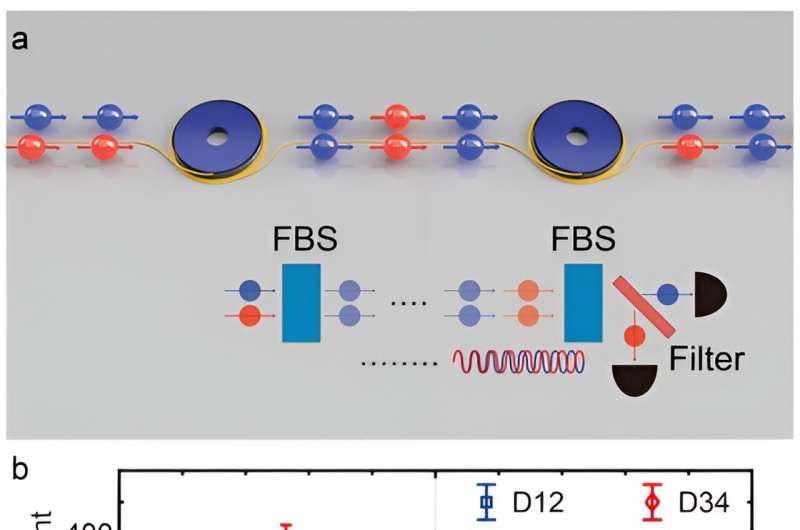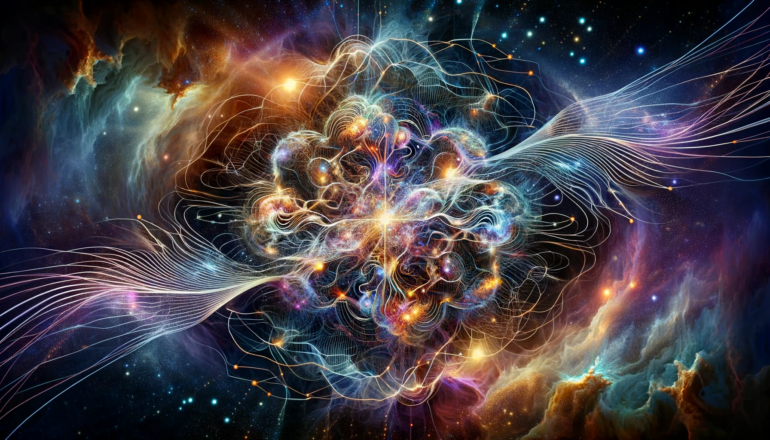Scientists have introduced a form of quantum entanglement known as frequency-domain photon number-path entanglement. This advance in quantum physics involves an innovative tool called a frequency beam splitter, which has the unique ability to alter the frequency of individual photons with a 50% success rate.
For years, the scientific community has delved into spatial-domain photon number-path entanglement, a key player in the realms of quantum metrology and information science.
This concept involves photons arranged in a special pattern, known as NOON states, where they’re either all in one pathway or another, enabling applications like super-resolution imaging that surpasses traditional limits, the enhancement of quantum sensors, and the development of quantum computing algorithms designed for tasks requiring exceptional phase sensitivity.
In a new paper published in Light: Science & Applications, a team of scientists, led by Professor Heedeuk Shin from Department of Physics, Pohang University of Science and Technology, Korea, have developed entangled states in the frequency domain, a concept akin to spatial-domain NOON states but with a significant twist: instead of photons being divided between two paths, they’re distributed between two frequencies.
This advancement has led to the successful creation of a two-photon NOON state within a single-mode fiber, showcasing an ability to perform two-photon interference with double the resolution of its single-photon counterpart, indicating remarkable stability and potential for future applications.

An experimental schematics for the frequency-domain entanglement. Two photons with distinct colors, red and blue, are injected into the interferometer constructed with two frequency beam splitters. Then, the resultant interference pattern is measured. b, The measured interference pattern with the two-photon NOON state, showing a two-fold enhancement in resolution compared to the single-photon counterpart. c, The measured interference pattern with the single-photon state. © Dongjin Lee, Woncheol Shin, Sebae Park, Junyeop Kim, and Heedeuk Shin
“In our research, we transform the concept of interference from occurring between two spatial paths to taking place between two different frequencies. This shift allowed us to channel both color components through a single-mode optical fiber, creating an unprecedented stable interferometer,” Dongjin Lee, the first author of this paper, said.
This discovery not only enriches our understanding of the quantum world but also sets the stage for a new era in quantum information processing in the frequency domain. The exploration of frequency-domain entanglement signals promising advancements in quantum technologies, potentially impacting everything from quantum sensing to secure communication networks.
More information:
Dongjin Lee et al, NOON-state interference in the frequency domain, Light: Science & Applications (2024). DOI: 10.1038/s41377-024-01439-9
Provided by
Chinese Academy of Sciences
Citation:
Unveiling a new quantum frontier: Frequency-domain entanglement (2024, April 26)
